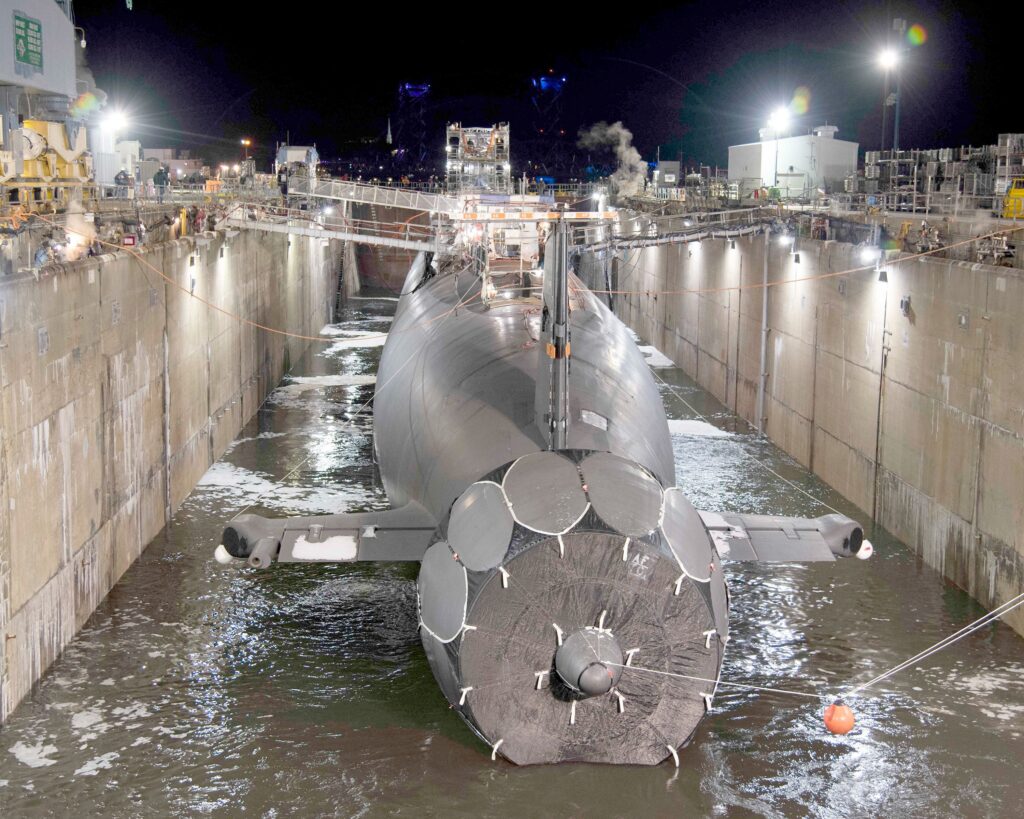
By Richard R. Burgess, Senior Editor
ARLINGTON, Va. — The Department of the Navy (DON) is facing a reduction of $12 billion of buying power if the Defense Department has to operate through fiscal 2024 under a continuing resolution (CR) and Congress does not pass a supplemental budget, a top DON official said.
“The misalignment in funding lines results in $26 billion of funding misalignments that we may have in our coffers — but not be able to spend it on the programs that matter,” said Under Secretary of the Navy Erik Raven, speaking Feb. 28 to reporters. “When you add all this up, this is nearly a 10% impact to our topline. This is getting into the territory of the 2013 sequester in terms of fiscal impacts. So, this is a very serious situation.”
Raven said that if a full-year CR is the case, the DON’s priorities would be readiness first and people second. “[W]hat that means is taking risk and investment programs. And I’m very concerned about our ability not only to execute that strategy unless given really unprecedented flexibilities by Congress, but also the follow-on impacts on industrial base and our modernization plans.”
Regarding readiness, Raven said that current operations, such as the effort to defend commercial shipping in the Red Sea from Houthi rebels, would take precedence.
“We need to be able to perform our mission,” he said. “And simply if we don’t have the resources that we need to execute all of our missions, we have to make tough choices. But between the ability to fight tonight and be ready for all the threats versus preparing for the future and modernizing our forces it is a tough decision. But we have to lay our chips somewhere and that’s on the ability to perform our missions today.”
He listed a few programs that would be severely affected by a year-long CR and lack of a supplemental from Congress:
- The overhaul of the attack submarine USS Boise, delayed for seven years and finally slated, would not be executed.
- The amphibious assault ship construction program would not be kept on track.
- The Virginia-class attack submarine program would face a $2 billion shortfall.
- Munition funding would suffer “across the board.”
- Construction of three child-development centers — two in Virginia and one in Guam — would be delayed.
- Doubling of funds for SM-6 missiles — used in the Red Sea operations — would not be doable.
- A $3.4 billion investment in the submarine industrial base — to enable production of submarines at a rate of one Columbia ballistic-missile submarine and two Virginia-class submarines — would have to be delayed.
- BlueHalo to Test C-UAS System on Marine Corps JLTV - April 29, 2024
- USS George Washington Deploys to U.S. Southern Command, Eventually Headed to Japan - April 26, 2024
- SECNAV Advocates Increased Legal Immigration to Increase Shipbuilder Workforce - April 23, 2024



